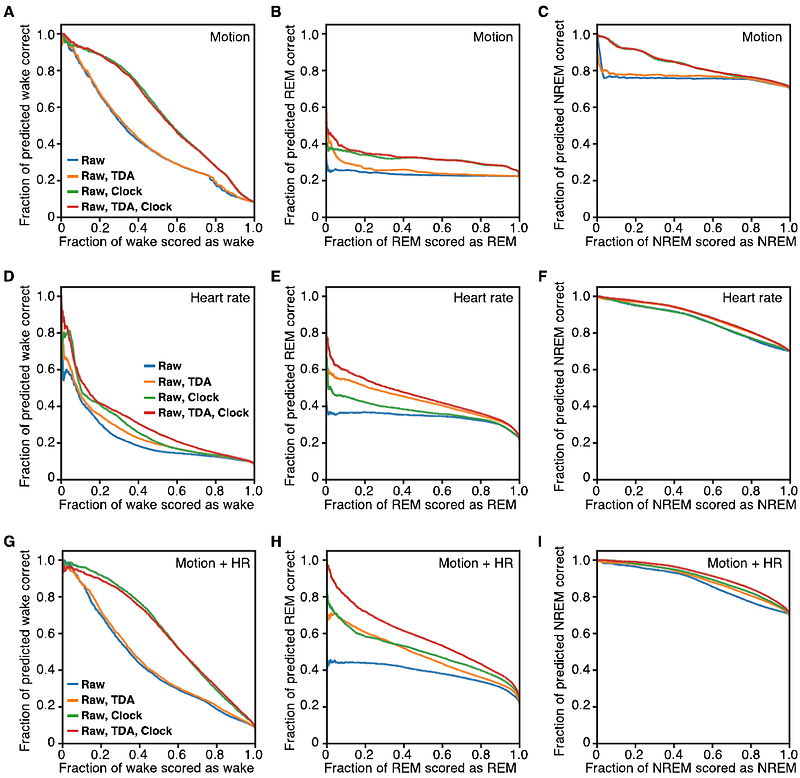The combination of topological data analysis and mathematical modeling improves sleep stage prediction from consumer-grade wearables

The combination of topological data analysis and mathematical modeling improves sleep stage prediction from consumer-grade wearables
Lee, M. P.; Kim, D. W.; Walch, O.; Forger, D. B.
AbstractWearable devices have become commonplace tools for tracking behavioral and physiological parameters in real-world settings. Nonetheless, the practical utility of these data for clinical and research applications, such as sleep analysis, is hindered by their noisy, large-scale, and multidimensional characteristics. Here, we develop a neural network algorithm that predicts sleep stages by tracking topological features (TFs) of wearable data and model-driven clock proxies reflecting the circadian propensity for sleep. To evaluate its accuracy, we apply it to motion and heart rate data from the Apple Watch worn by subjects undergoing polysomnography (PSG) and compare the predicted sleep stages with the corresponding ground truth PSG records. We find that TFs and clock proxies can improve the overall performance of wake/REM/NREM sleep classification, particularly in identifying REM and NREM sleep (AUROC/AUPRC improvements > 9% and REM/NREM accuracy improvement 12%). We find that this improvement is mainly attributed to the heart rate TFs. To confirm this, we compare the heart rate TFs between two groups, expected to have different cardiovascular conditions: younger, healthy subjects from the Apple Watch cohort and elderly subjects from the Multi-ethnic Study of Atherosclerosis cohort. Indeed, TFs largely vary across REM and NREM sleep in younger individuals while the variations disappear in elderly individuals, explaining the enhanced improvements in REM or NREM sleep classification problems only in the younger individuals. This study demonstrates the benefits of combining topological data analysis and mathematical modeling to extract hidden inputs of neural networks from puzzling wearable data.